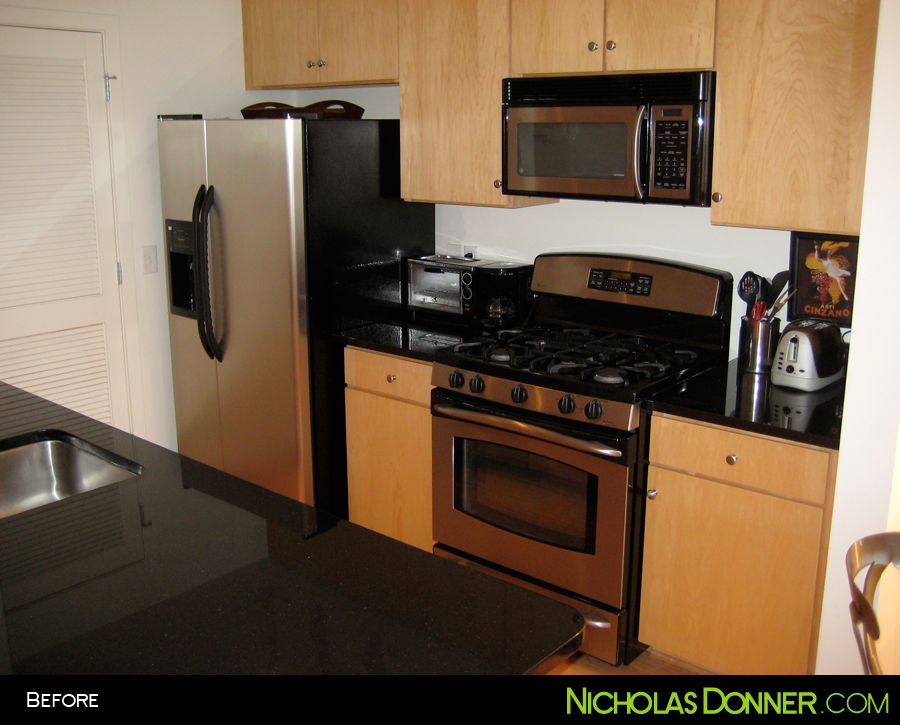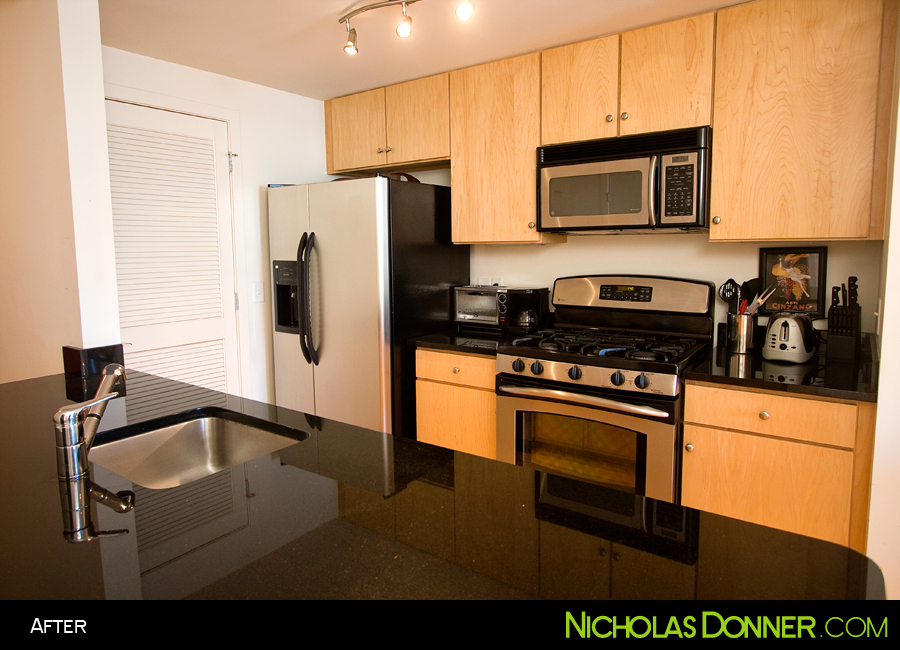Earlier this year, I started working with some real estate agents and property managers to help them display the full potential of their properties and to give them an edge on their competition using some simple photographic techniques and design principles. Below, you can see the difference between a point-and-shoot camera and a DSLR with a few flash units.
There are obvious differences. For the first photo the point-and-shoot is zoomed out as wide as it will go. It was set on "auto" and didn't fire a flash. The couch looks OK. But the kitchen is dark, the lights that are on are completely blown out and you can only see half of the room. The second photo is a 40D with a 10-22mm lens. There is one flash (camera right) bouncing off the ceiling and one flash (camera left) bouncing off of the left wall. Huge difference!
Same stuff going on here. The wide angle lens lets you see more of the room and it appears to be bigger. This shot uses just one flash bounced off the wall behind me. Because of the bounced light there aren't any glaring reflections in the shiny surfaces of the kitchen and the wooden cabinets look nice.
Bathrooms are tricky, mostly because they are small spaces and have mirrors that make it difficult to hide yourself or your lights from showing up in the frame. Again, you can see that adding light from a flash keeps the light fixtures from looking blown out and the wood looking more natural. This shot had one flash bouncing off either the floor or ceiling near the camera and one coming in the doorway near the back cabinets.
Each time I shoot a house I'm getting better at it and faster at setting up the lighting for the shot. Reading Strobist definitely helped with understanding the techniques but there's really no better way to learn than pulling out all your gear and giving it a go.






I like the ilumination on the "after" photos
ReplyDelete